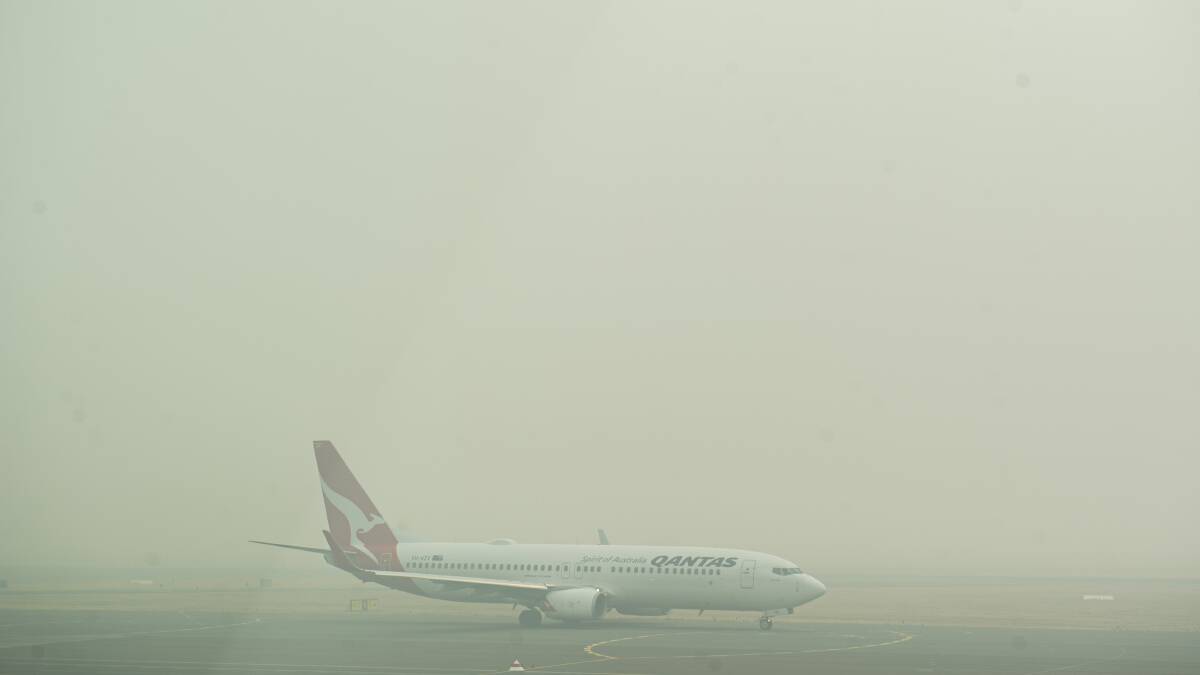Hundreds of Canberrans went to hospitals and walk-in centres for treatment during the peak of the unprecedented bushfire air-pollution crisis this summer.
Subscribe now for unlimited access.
or signup to continue reading
There were 176 smoke-related presentations to Canberra Hospital's emergency department between December 20 and January 12, government figures reveal.

In the same period, there were 48 smoke-related presentations at Calvary Public Hospital's emergency department.
ACT Health said those numbers represented patients who reported their symptoms were from the smoke.
There were also 570 presentations to Canberra nurse-led walk-in centres that could have been attributed to smoke, an ACT Health Directorate spokeswoman said.
The reasons for these presentations included sore throats, watery eyes, coughs and other respiratory conditions.
Canberra Hospital emergency department clinical director Greg Hollis said the extra presentations had not put pressure on the emergency department, with the cases offset by lower presentations in different patient groups.
"There have been a number of smoke-related presentations, and almost all of those have been quite mild to moderate respiratory symptoms," he said.
"The vast majority have been able to be discharged after a short period of treatment in the emergency department."
Dr Hollis said the figures indicated people were doing sensible things in response to the smoke, like staying indoors and avoiding strenuous activity.
Only a small number of people have had to be admitted to wards for treatment, mostly people with pre-existing chronic respiratory illnesses, he said.
READ MORE:
The smoke affected many public buildings in the ACT, including Canberra Hospital.
Smoke infiltrated many departments but Dr Hollis said it did not affect the operations of the emergency department.
"There were some measures we took as far as reducing traffic through some doors," he said.
"There were also a number of hospital-wide things that were done. Changes were made around technical aspects of some of the airconditioning."
Dr Hollis said the presentations peaked on the days with the worst smoke quality.
"There were two or three days before Christmas and then again from New Year's Eve onwards for the next several days to a week," he said.
He said the respiratory ward had a small number of admissions from smoke-affected patients.
Dr Hollis said people who had symptoms like irritated eyes and throats did not necessarily need to seek medical treatment.
But people with chronic heart and lung problems should always follow up with their GP, or the emergency department if acutely unwell, he said.
Canberra has choked through hazardous smoke conditions since December, forcing the closure of some workplaces and public buildings.
P2 masks were sold out and Australia Post suspended deliveries.
Some scientists say the long-term health risks of the smoke haze will not be known for decades, with the situation unprecedented and no similar data available.
At the worst periods of smoke haze within Canberra, air-quality rankings deemed it to have the most hazardous air pollution in the world.
Pollution levels peaked on New Year's Day when some parts of Canberra recorded daily average PM2.5-particle levels of almost 5000.
Anything above 200 is considered hazardous.
PM2.5 particles are very small particles found in smoke, with a diameter of 2.5 micrometres or smaller.


